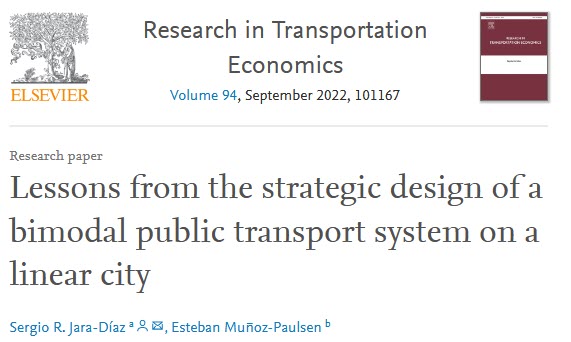Sergio R.Jara-DíazaEstebanMuñoz-Paulsenb
Lessons from the strategic design of a bimodal public transport system on a linear city
AbstractA new microeconomic approach for the strategic design of public transport systems considering two technologies (subway and bus) is explored using a stylized linear city where all possible lines structures can be described and analyzed, and where demand is completely represented with three parameters: total volume, the proportion starting at the periphery, and the proportion of these ending at the CBD. Using Santiago-like data and three levels of total demand the social cost minimizing systems are presented in the trip distribution space. Different bus-based structures are superior for most demand distributions (with a pattern rather insensitive to total patronage), except when the capacity of the bus system is reached in some section of the city or when the total number of long trips is very large. A sensitivity analysis confirms the importance of these elements, particularly in the role of the subway and in the conditions that make the feeder-trunk scheme convenient. Policy and methodological lessons emerge for extensions to a more general description of a city where lines structures enumeration is not possible.
